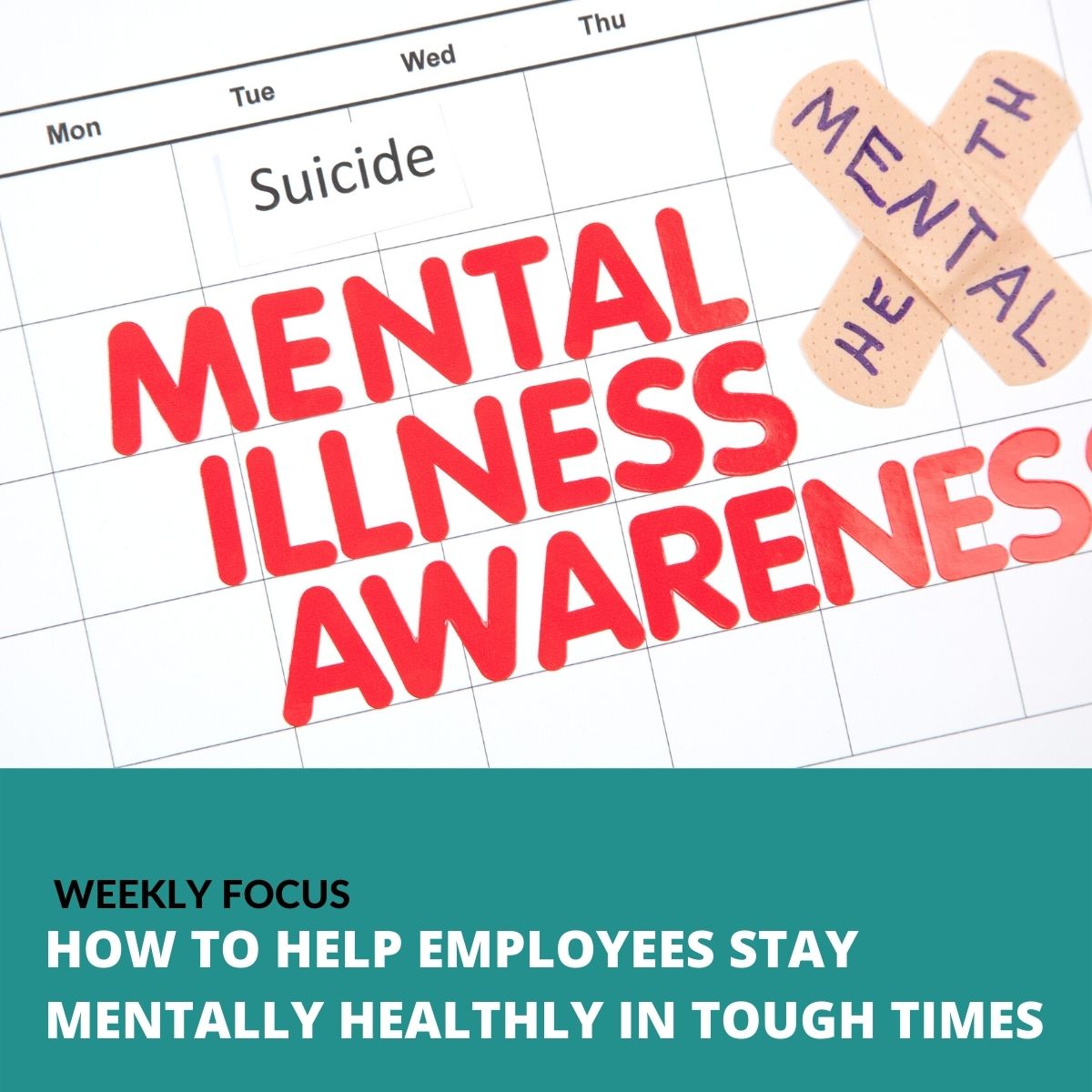Safety in the Workplace is More Than Hard Hats
Mental health is a foreign topic to most of us. As laypeople, we don’t fully grasp the causes or their effects on a person’s daily life, outlook, and productivity at work.
Although it’s a given (and the law) that employers are responsible for their employees’ physical safety and well-being, your workplace can benefit in numerous ways by looking at the mental well-being of all who work there. Let’s face it, most of us spend the majority of our time at work. As a result, the conditions around us will have a major impact on the rest of our lives, including our families and friends.
Many of us experience and do our best to cope with different forms of mental health pressures while on the job – regardless of whether those pressures originated at work or we brought them to work from home.
What Do I Mean By the Term Mental Health?
As employers, managers, and supervisors, we can help by creating support structures that effectively empower people to cope with mental (emotional) health issues.
I am certainly no expert in this field. So I will keep my definition rather broad but meaningful.
I define mental health as a positive state of well-being.
With a healthy mental state, we feel (and are) capable of realizing our full potential as human beings. In addition, we have the personal tools to effectively cope with the normal stressors occurring every day in normal life.
It’s Not the Lack of Stress We Need
The problem with stress is not that it exists but rather how it can accumulate. How you and I cope with the buildup of stressful events and circumstances will determine our overall mental health.
I can’t overstate the need for a vibrant mental health and wellness program: a program that is easily accessed by employees and reinforces the organization’s commitment to the mental well-being of each person who is employed.
Benefits of A Mental Health and Wellness Program
To begin with, it changes how employees feel about going to work. We all perform, including me, better when I know that who I am is valued, not just what I do. My sense of value, along with the overall sense of the workers within the organization, creates a positive work culture and better morale in the workplace.
A mental health program provides an opportunity to end the uncomfortable silence and different stigmas around the mental health of employees in the workplace. Hopefully, we can encourage all team members to acknowledge and seek help before a problem has a chance to escalate.
Then there is the long-term benefit to the company of the preventative approach to health, be it physical or mental. The better we are at supporting health instead of waiting for illness, the more likely we will reduce disability-related costs.
Things to Consider in Your Health and Wellness Program
Provide employees with cost benefits for consultations with therapists and counselors. These professionals can be an important lifeline to an employee, and employer-paid benefits will help to minimize barriers to seeking help.
- Make employees aware of the assistance programs (EAP) to help employees address issues or stressors in their personal lives. Having the resources is great; knowing they exist and how to take advantage of them without “losing face” or incurring problems with the manager or shift supervisors is optimal.
- I’ve long advocated for the need for employees to take breaks from work and do things together. It could be a group session, a weekend outing, time to sit down and eat together at lunch, or a multitude of ways to get to know one another. We need to relax. Refocus. Build the networks that help us care about the welfare of each other. Our company is facilitating four of these for clients in the next month alone.
- Ensure employees are using their vacation time and taking weeks off when possible. In fact, this should almost be mandatory. Time away from the office is an essential aspect of any effective mental health strategy.
- Managers need proper training and know-how to identify mental health issues among their teams. With the appropriate training, a manager can be proactive when there are signs of potential mental health issues. Effective training is key.
- Employers should actively promote healthy lifestyles among their workforce. This includes everything from exercise and nutrition to meditation and a good night’s sleep. An effective, win-win approach to promoting healthy lifestyle choices is often found through team-building activities.
Maintaining emotional health in our day-to-day lives allows us to enjoy life better and helps us cope with a wide range of emotions healthily. Workplaces that put employee total health first provide their employees with the right opportunities and environment to thrive in.
To learn more about standards and guidelines for workplace mental health, visit the Mental Health Commission of Canada website: Mental Health Commission of Canada.






